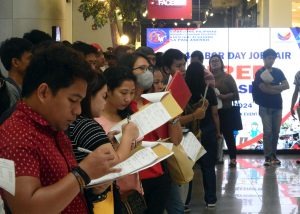The Davao Oriental government has started turning all stones to ensure that its tourism industry is prepared to welcome visitors.
In an electronic mail sent to the TIMES, Miguel Trocio, head of the Provincial Tourism Office, said that the provincial government has started the preparations because it is now necessary for economic activities to resume so people can resume livelihood activities, but also to protect the visitors and those living in these places, the provincial government has laid out the plans on the ground to ensure that the reopening of these treasures would be seamless, said Trocio in an electronic mail.
As an initial step, Trocio added, the provincial government, in its efforts to ensure that the industry adhere to the guidelines imposed by the Department of Tourism under Administrative Order 2020-02 and Memorandum Circular 2020-02, decided to discuss the issues with the local tourism officers and other industry stakeholders.
Municipal governments have also been required to come up with their respective isolation centers that can be used when visitors and even residents manifest symptoms of the virus.
It has oriented the stakeholders, who were made to secure certifications so they could resume operations, on what to do so they could prepare themselves and their establishments in accepting tourists.
The office has also not stopped in educating the stakeholders on steps that they needed to take through regular briefings particularly on new health protocols so that seamless actions can be taken when virus infections are monitored.
“The responsibility of fighting the pandemic is now extensively shared with private stakeholders,” he said, adding that collaboration among industry stakeholders is what is needed to ensure that success in the resumption of operations of the industry in the province is achieved.
“Widespread and extensive networking with local government units and private stakeholders on the implementation of new normal health protocols and guidelines especially on what to do if in cases, God forbids, of local transmissions,” he added.
Tourism Regional Director Tanya Rabat-Tan agreed that the province is among the most ready destinations in the country to open itself to tourists even when the world is still grappling with the impact of the coronavirus disease 2019 (Covid) pandemic.
“(Davao Oriental) has basic amenities that can cater to domestic tourists at this time,” said Rabat-Tan during an online press briefing early this month.
The good thing about the province, she added, is that it has key eco-tourism destinations which the office has been promoting. The agency pushed for these kinds of destinations now that its target is to lure tourists who are locals like Uyan who have been craving to visit destinations near their places.
One example of this destination is the unique Mount Hamiguitan Range and Wildlife Sanctuary which the United Nations Educational, Scientific and Cultural Organization enshrined in the World Heritage Site list in 2014.
Nestled in the tri-boundary of the towns of San Isidro, Governor Generoso and the city of Mati, the mountain range is home to unique flora and fauna, including centuries-old bonsai trees, that prompted the Regional Development Council to ask Congress to expand the protected area from just 7,132.76 hectares to 26,652 hectares four years ago.
In seeking to expand the coverage of the area, the RDC said that it was intended to “further enhance its wildlife protection, specifically the habitat of the Philippine Eagle and other endemic wildlife species.”
To preserve the place, then governor and now First District Rep. Corazon N. Malanyaon, decided to establish a 13-hectare Mt. Hamiguitan World Heritage Park as ordinary visitors are not allowed to trek the range but can still look at its beauty in its entirety.
Another most-visited destination in the province is the Aliwagwag Falls in the town of Cateel, a long cascading body of water that has also become the primary source of water for people downstream, including the irrigation. It is this body of water which has become the source of water for the Aragon Dam, the biggest irrigation project of the Mindanao Rural Development Program, the World Bank-funded project that pushed for the development of the rural areas of the island which lasted for about 10 years and ended six years ago.
Devastated during the onslaught of typhoon Pablo in November 2012, the provincial government decided to not only rehabilitate it, but has also declared it as a protected landscape.
Another jewel is in the town of Caraga, the Pusan Point, which became popular when throngs of members of the media converge in the area trying to witness the first glimpse of the millennium sunrise in 2000. Unfortunately, it was a rainy millennium sunrise.
In the town of Governor Generoso is where Cape San Agustin, host to three of the oldest light houses in the country, is located. The imposing place, which showcases the beauty of a long shoreline and blue waters below, is facing the Celebes Sea.
And there is Dahican in the capital, the place which is synonymous to natural powdery white sand beaches of Mati City, the capital of the province. Dahican is not only home to one of the most beautiful beach fronts of the country, but also to international skimboarders even as it is also teeming with aqua marine resources.
Just like in any other place, the tourism industry in the province was put to a standstill when the virus hit the world.
Trocio said there is a need to reopen both the private and government-establishments, about 300 of them, have been hardly hit that about 1,500 individuals were affected “not counting the other value chain of tourism.”
“Like any other industries, the tourism industry in Davao Oriental may yet to recover within two to three years. Or not until a vaccine is found,” he added.
“What we can do right now is first help the establishments get back to its feet with our allowance of tourism activities, opening of our borders to tourists and visitors – with health standards and protocols on new normal,” he said.
In terms of losses in receipts, in the last two years, the province estimated about P147.239 million and P117.351 million, respectively, on a P500 per visitor spending average.
The decline in receipt value last year was attributed to the decline in the number of visitors in the last quarter, the time of the year when the province was teeming with tourists, after the region and the rest of Southern Mindanao were shaken by a series of earthquakes.
The provincial government believed it could still salvage about P40 million in receipts until the remainder of the year.
At present, what the office has been doing is lobbying with key agencies so that local businesses can access stimulus packages to ensure that they can slowly recover from the impact of the virus.
It has also sought the approval of the Provincial Task Force that any visitors cannot enter the place without a prior booking, although this policy has yet to earn a nod.
Under this proposal, “tourists and guest must secure booking with local establishments before they will be allowed entry in the provincial borders,” he said.
The provincial office has also been busy in upgrading the skills of the stakeholders through online seminar and online promotional marketing strategies.
The promotional campaigns, he said, is very important because the province is positioning itself as a place for :intra-tourism,” a place for people to visit, they be outsiders or locals like Uyan.
It has also collaborated with the office of Rabat-Tan in coming up with “subsidized tour packages” as it positions itself “as your weekend wander destination.
“Eco-tourism parks and sites operated by the provincial government are on their way of preparing for the re-opening,” he said, adding that like the private establishments, the provincial government has also been applying for certification.


